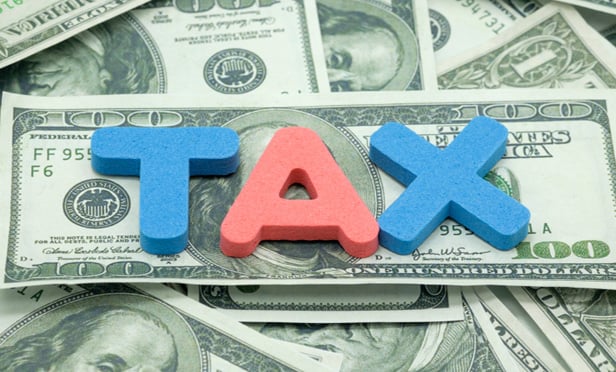Features

Underwriting Adjusts As Pandemic Continues
Underwriting clearly has been affected by the pandemic-led downturn. Lenders are using higher vacancies and reserves to underwrite, leading to more conservative loan proceeds.
Features

PPP Loans and Small Business Debtors In Bankruptcy
At present, there remains no avenue for Chapter 11 debtors to receive PPP Loans during the course of the bankruptcy case. The limitation on PPP availability notwithstanding, other legislative changes have greatly enhanced the eligibility for and efficacy of bankruptcy relief for many small businesses.
Features

Tax Issues In NY Publicity Right Becoming Descendible
While some states, like California, recognize post-mortem publicity rights, New York had extended the right of publicity to living New Yorkers only.
Columns & Departments

Co-ops and Condominiums
Occupation By Family Member of Corporate Principal Does Not Terminate Unsold Share Status Abandonment of Easement By Condominium Unit Owner Condominium Unit Owner Entitled to Damages for Board's Failure to Approve Transfer
Features

Law Firms Should Take Advantage of Tenant Market Post-COVID-19
Due to COVID-19's impact, the commercial office market should fundamentally shift in favor of tenants for the next several years. Law firm tenants should find an environment characterized by friendly concessions, options across asset classes and price ranges, and limited competition for space.
Features

Not Your Property, Your Business: When Customized Products Become the Business of Rights Holders and Courts
In some instances the appearance of third-party intellectual property on items purchased, owned and customized by the purchaser may be legal under the doctrines of first sale and fair use.
Features

Employment Law Considerations In Bankruptcy
This article addresses some of the relevant employment laws and litigation vulnerabilities that companies, including their owners, officers and directors, should consider before ceasing operations or filing for bankruptcy.
Features

Fraudulent Transfer Claims In Claw Back Litigation
This article focuses on the basics of fraudulent transfer claims and solvency analysis in the context of lawsuits where a plaintiff is seeking to recover payments made prior to the bankruptcy case being commenced, sometimes referred to as "claw back" litigation.
Features

Employers Must Be Mindful of Pay Practices, As Criminal Charges for Underpayment of Workers Becomes Increasingly Common
Hillary Clinton's 2015 statement about the possibility of incarceration for employment-related failures was, to many, an alarming prospect. Since that time, this movement has grown, and has recently gained momentum. Today, prosecutors across the country increasingly seek criminal fines and jail time for what were previously seen as non-criminal labor violations.
Columns & Departments

Landlord & Tenant Law
HSTPA Did Not Apply Retroactively to Personal Use Petition
Need Help?
- Prefer an IP authenticated environment? Request a transition or call 800-756-8993.
- Need other assistance? email Customer Service or call 1-877-256-2472.
MOST POPULAR STORIES
- The 'Sophisticated Insured' DefenseA majority of courts consider the <i>contra proferentem</i> doctrine to be a pillar of insurance law. The doctrine requires ambiguous terms in an insurance policy to be construed against the insurer and in favor of coverage for the insured. A prominent rationale behind the doctrine is that insurance policies are usually standard-form contracts drafted entirely by insurers.Read More ›
- The Brave New World of Cybersecurity Due Diligence in Mergers and Acquisitions: Pitfalls and OpportunitiesLike poorly-behaved school children, new technologies and intellectual property (IP) are increasingly disrupting the M&A establishment. Cybersecurity has become the latest disruptive newcomer to the M&A party.Read More ›
- A Lawyer's System for Active ReadingActive reading comprises many daily tasks lawyers engage in, including highlighting, annotating, note taking, comparing and searching texts. It demands more than flipping or turning pages.Read More ›
- Abandoned and Unused Cables: A Hidden Liability Under the 2002 National Electric CodeIn an effort to minimize the release of toxic gasses from cables in the event of fire, the 2002 version of the National Electric Code ("NEC"), promulgated by the National Fire Protection Association, sets forth new guidelines requiring that abandoned cables must be removed from buildings unless they are located in metal raceways or tagged "For Future Use." While the NEC is not, in itself, binding law, most jurisdictions in the United States adopt the NEC by reference in their state or local building and fire codes. Thus, noncompliance with the recent NEC guidelines will likely mean that a building is in violation of a building or fire code. If so, the building owner may also be in breach of agreements with tenants and lenders and may be jeopardizing its fire insurance coverage. Even in jurisdictions where the 2002 NEC has not been adopted, it may be argued that the guidelines represent the standard of reasonable care and could result in tort liability for the landlord if toxic gasses from abandoned cables are emitted in a fire. With these potential liabilities in mind, this article discusses: 1) how to address the abandoned wires and cables currently located within the risers, ceilings and other areas of properties, and 2) additional considerations in the placement and removal of telecommunications cables going forward.Read More ›
- The New York Uniform Commercial Code Comes of AgeParties in large non-consumer transactions with no connection whatsoever to New York often choose its law to govern their transactions, and New York statutes permit them to do so. What most people do not know is that the New York Uniform Commercial Code is outdated.Read More ›
